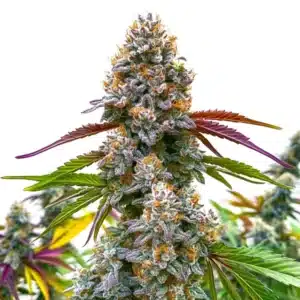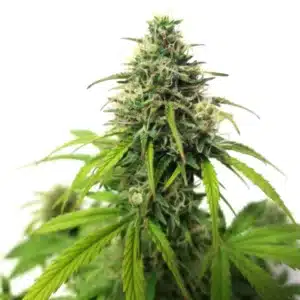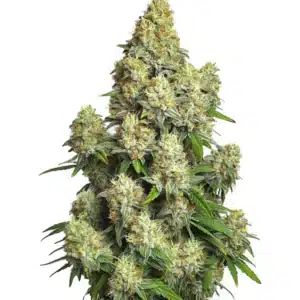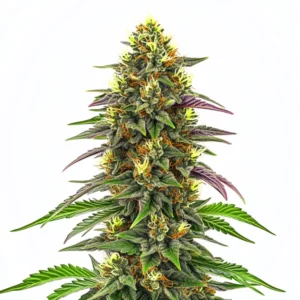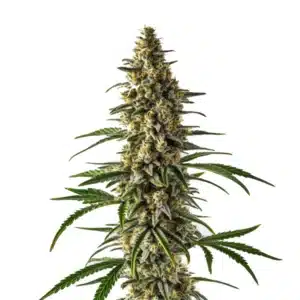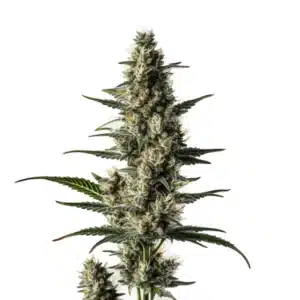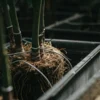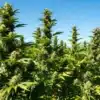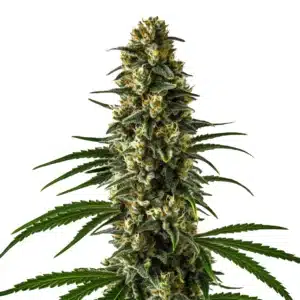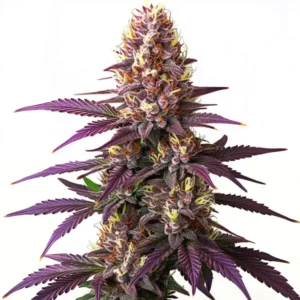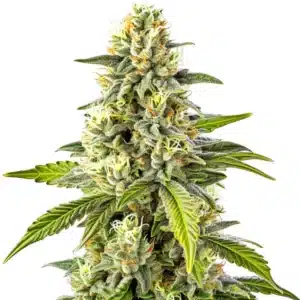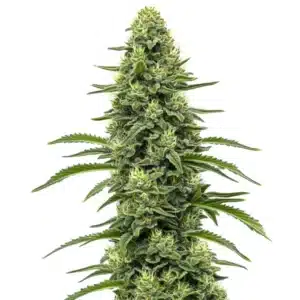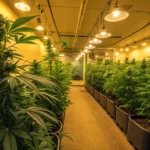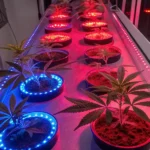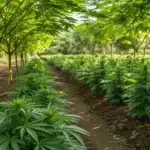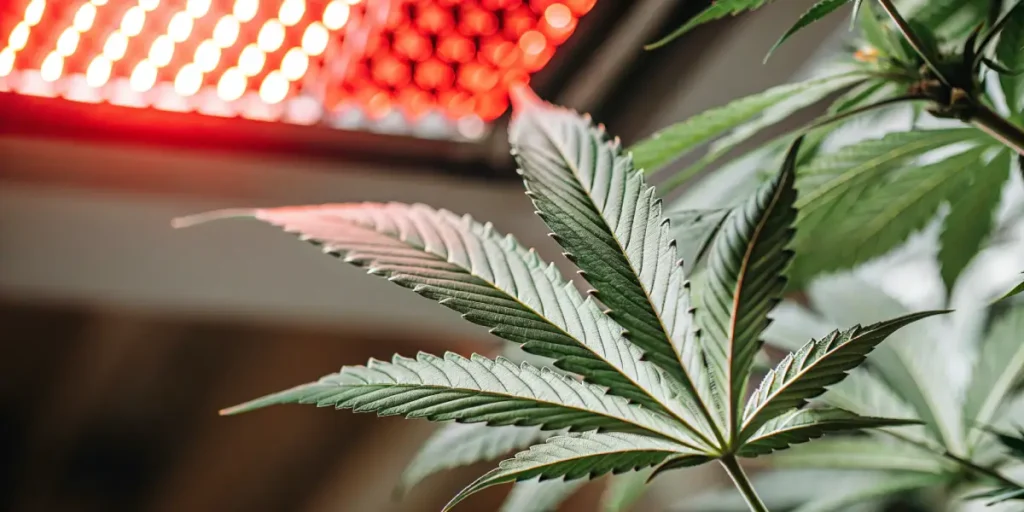
How Cannabis Responds to Red and Far-Red Light
Cannabis plants thrive under specific light conditions. How Cannabis Responds to Red and Far-Red Light is key in understanding how the plant grows and blooms. These light spectra are part of the visible light spectrum, with red light being around 660 nm and far-red light closer to 730 nm. This spectrum plays a crucial role in photosynthesis and flowering. For both novice growers and seasoned cultivators, understanding these light conditions can significantly impact the success of their cannabis crops.
When cultivating cannabis, using the right light can make a huge difference. Red light helps cannabis in several ways. It enhances photosynthesis, which is the process plants use to convert light into energy. This energy is vital for growth and development. On the other hand, far-red light affects the plant’s life cycle, particularly during the flowering stage. By manipulating these light conditions, growers can optimize cannabis yield.
Recommended Strains
Critical Daddy Purple
|
|
THC | 19% (Medium) |
|
|
Type | Feminized |
|
|
Yield | High |
|
|
Phenotype | 50% Indica / 50% Sativa |
AK Auto
|
|
THC | 16% - 18% (Medium) |
|
|
Type | Autoflowering |
|
|
Yield | Medium |
|
|
Phenotype | 35% Indica / 65% Sativa |
Let’s delve into how cannabis responds to red and far-red light. For instance, if you’re growing the renowned strain, Auto AK from Blimburn Seeds, the right light spectrum can enhance its growth. The interaction between red and far-red light can be the secret behind successful cannabis cultivation, whether you’re growing indoors or outdoors.
Cannabis Growth Under Red Light Spectrum
Red light is essential for the vegetative phase of cannabis. It encourages robust growth by promoting stem elongation and leaf development. When cannabis plants are exposed to red light, chlorophyll absorbs it and uses it for photosynthesis. This process is crucial for building the plant’s structure and energy reserves.
In practical terms, using red light can help you grow healthier cannabis plants. For instance, if you’re cultivating Critical Daddy Purple, incorporating red light can enhance its growth. This strain responds well to controlled environments where the light spectrum is optimized. Red light ensures the plants receive the energy needed to reach their full potential.
The cannabis growth under red light spectrum is not only about energy absorption but also about enhancing the plant’s resilience. Red light aids in strengthening the plant’s immune system, making it more resistant to pests and diseases. This is particularly beneficial for organic growers who rely less on chemical interventions. Additionally, red light can also improve the plant’s nutrient uptake efficiency, ensuring that the cannabis plants utilize soil resources more effectively.
Moreover, the red light spectrum is pivotal in enhancing the plant’s overall morphology. It influences the size and thickness of leaves, which in turn impacts the plant’s ability to capture light and photosynthesize efficiently. This is critical for maintaining high growth rates, especially during the early stages of development. By understanding how cannabis responds to red and far-red light, growers can fine-tune their cultivation techniques to achieve optimal results.
Effects of Far-Red Light on Cannabis Flowering
Far-red light influences how cannabis transitions from the vegetative stage to the flowering stage. It affects the plant’s internal clock, known as the photoperiod. By adjusting the amount of far-red light, growers can manipulate when cannabis plants start flowering. This manipulation helps in timing the harvest and improving yield.
For example, the Gelato strain benefits from far-red light during its flowering stage. When exposed to far-red light, Gelato can initiate flowering sooner. This can be particularly useful if you’re trying to fit more growing cycles into a year. Far-red light can also help the plant’s flowers become denser and more resinous.
The effects of far-red light on cannabis flowering extend to influencing the plant’s hormonal balance. Far-red light can induce the production of flowering hormones such as ethylene, which accelerates the transition from vegetative growth to flowering. This is especially beneficial for growers looking to shorten the growth cycle and achieve more harvests per year. Additionally, far-red light can enhance the quality of the flowers by increasing their aromatic compounds and cannabinoid content.
Furthermore, far-red light plays a crucial function in the plant’s photomorphogenic responses. It can alter the plant’s architecture by promoting elongation of stems and branches, which is advantageous in dense growing setups where light penetration is a concern. By carefully managing the effects of far-red light on cannabis flowering, cultivators can optimize space and ensure that plants receive uniform light exposure, leading to more consistent yields.
Promos & Deals
Optimizing Cannabis Yield with Red and Far-Red Light
Combining red and far-red light can optimize cannabis yield. This combination influences photosynthesis and flowering, which are key factors in yield. Red light boosts energy production, while far-red light regulates the flowering process. Together, they create an environment that promotes maximum growth and productivity.
For growers, using red and far-red light can be a game-changer. Whether you’re growing indoors or outdoors, adjusting your light setup can make a significant difference. Using LED lights that emit both red and far-red light can enhance the growth of strains like Auto AK, Critical Daddy Purple, and Gelato. These strains have shown excellent responses to optimized light conditions.
Optimizing cannabis yield with red and far-red light involves strategic manipulation of light duration and intensity. By fine-tuning the balance between these light spectra, growers can create a tailored environment that meets the specific needs of their cannabis strains. This customization allows for precise control over growth rates and flowering times, directly impacting the overall yield and quality of the harvest.
Besides to enhancing yield, this light optimization strategy can also improve the sustainability of cannabis cultivation. By maximizing the efficiency of light use, growers can reduce energy consumption and lower their carbon footprint. This is particularly important in indoor growing setups, where lighting is one of the largest energy expenses. Knowing how cannabis responds to red and far-red light can therefore not only boost productivity but also contribute to more environmentally friendly growing practices.
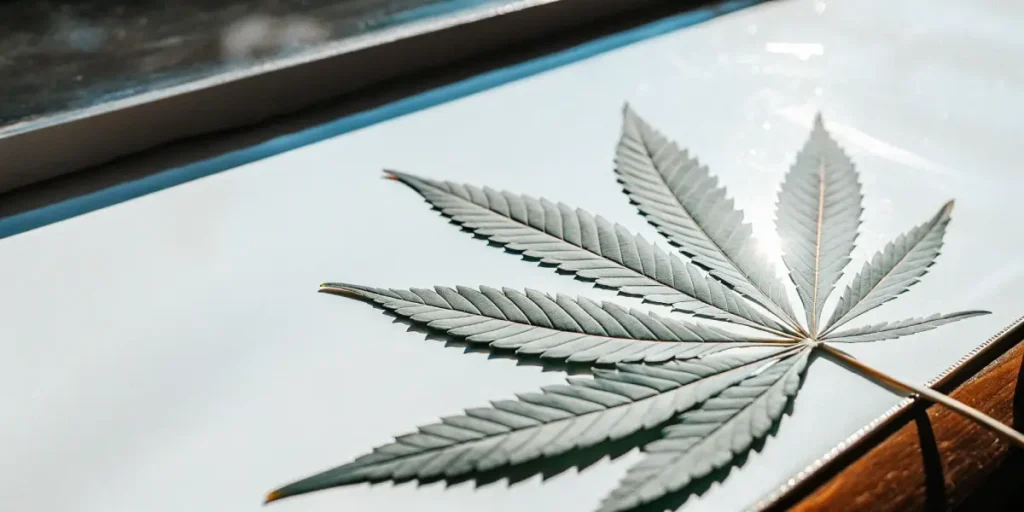
Cannabis Photoperiod Manipulation Using Red Light
Photoperiod manipulation is a technique used by growers to control the light cycle of cannabis plants. By using red light, you can extend the daylight period, which keeps the plants in the vegetative stage longer. This is particularly useful when you want to grow larger plants before they start flowering.
For instance, if you’re growing Critical Daddy Purple, manipulating the photoperiod with red light can help achieve a larger plant size. This technique is widely used by growers who want to maximize their plant’s vegetative growth before switching to the flowering phase.
Cannabis photoperiod manipulation using red light is a powerful tool for managing plant morphology and growth cycles. By controlling the duration and timing of light exposure, growers can influence the plant’s developmental stages, ensuring that they reach their full potential before flowering. This approach can be particularly advantageous in controlled environments where precision in growth management is crucial.
Moreover, photoperiod manipulation can aid in synchronizing the growth cycles of multiple plants, which is beneficial for large-scale operations. It ensures uniformity in plant size and development, facilitating more efficient harvesting and processing. The use of red light in this context allows growers to maintain flexibility and adaptability in their cultivation strategies, which is essential for optimizing both yield and quality.
Red and Far-Red Light Influence on Cannabis Photosynthesis
The influence of red and far-red light on photosynthesis is profound. Red light is absorbed by chlorophyll, the green pigment in plants, and is crucial for photosynthesis. This process converts light into chemical energy, which fuels the plant’s growth. Far-red light, although not directly involved in photosynthesis, plays a supportive role by influencing plant hormones.
For growers, knowing how cannabis responds to red and far-red light is vital. When growing strains like Gelato, providing the right light spectrum can enhance photosynthetic efficiency. This leads to healthier plants with more energy to allocate towards growth and flowering.
The red and far-red light influence on cannabis photosynthesis extends beyond energy production to affect the plant’s respiratory processes. By optimizing the light spectrum, growers can enhance the plant’s capacity to exchange gases, which is critical for maintaining high photosynthetic rates. This optimization can lead to faster growth and higher biomass accumulation, which are important factors in achieving high yields.
Additionally, the interplay between red and far-red light can modulate the plant’s stress response mechanisms. By enhancing photosynthetic efficiency, these light spectra can improve the plant’s resilience to environmental stressors such as temperature fluctuations and water scarcity. This adaptability is crucial for maintaining consistent growth and productivity, particularly in challenging growing conditions. Knowing how cannabis responds to red and far-red light can therefore be key to achieving sustainable and high-quality cultivation.

FAQs
How does red light affect cannabis growth?
Red light is essential for the growth phase of cannabis. It promotes photosynthesis, which is vital for energy production. This energy is used by the plant to build strong stems and large leaves. Red light mimics the sun’s natural spectrum, helping plants grow robustly during the vegetative stage.
Growers often use red light to ensure their cannabis plants develop a solid structure. This is crucial for supporting heavy buds during the flowering phase. By optimizing the red light spectrum, you can enhance the plant’s overall health and growth potential.
The impact of red light on cannabis growth is multifaceted. It not only supports structural development but also influences the plant’s metabolic processes. By enhancing chlorophyll production, red light ensures that the plant maintains high levels of photosynthetic activity, which is essential for robust growth. This makes red light a critical component in achieving vigorous plant development and maximizing biomass production.
Furthermore, red light can enhance the plant’s photoprotective mechanisms, allowing it to better manage light stress during intense exposure. This resilience is important for maintaining consistent growth rates and ensuring that the plants remain healthy throughout the growth cycle. Understanding how cannabis responds to red and far-red light can therefore be pivotal in optimizing growth conditions and achieving high yields.
What is the impact of far-red light on cannabis flowering?
Far-red light impacts cannabis by influencing its flowering stage. It interacts with the plant’s phytochrome system, which helps regulate the flowering process. By adjusting far-red light exposure, growers can control when plants start flowering, making it a powerful tool in cannabis cultivation.
This control over flowering time is essential for planning harvests and maximizing yields. Far-red light can also improve flower density and resin production, leading to high-quality cannabis. It’s an effective strategy for growers looking to optimize their crop’s flowering phase.
The impact of far-red light on cannabis flowering extends to enhancing the plant’s reproductive success. By influencing the timing and duration of flowering, far-red light can increase the likelihood of successful pollination and seed production. This is particularly beneficial for breeders looking to develop new cannabis strains with desirable traits.
Moreover, far-red light can improve the aesthetic qualities of cannabis flowers, such as color and aroma. By modulating the plant’s light perception, far-red light can enhance the expression of pigments and terpenes, which contribute to the overall appeal and marketability of the final product. Understanding the effects of far-red light on cannabis flowering is therefore crucial for growers seeking to produce high-quality cannabis with distinctive characteristics.
Can red and far-red light improve cannabis yield?
Yes, combining red and far-red light can significantly improve cannabis yield. Red light enhances photosynthesis, increasing energy production for growth. Far-red light, on the other hand, helps manage the timing of flowering. Together, they create an ideal growing environment.
Growers using this light combination can expect healthier plants and better yields. Whether growing indoors or outdoors, optimizing the light spectrum with red and far-red light is beneficial. It’s a simple yet effective way to boost your cannabis crop’s productivity.
The synergy between red and far-red light in improving cannabis yield lies in their complementary roles in plant development. While red light ensures that the plant has sufficient energy for vegetative growth, far-red light fine-tunes the transition to flowering, ensuring that the plant’s resources are efficiently allocated to flower development. This balance is crucial for maximizing yield and achieving a high-quality harvest.
Additionally, the use of red and far-red light can enhance the uniformity of plant growth and flowering, leading to more consistent yields across different cultivation cycles. This consistency is particularly important for commercial growers who require reliable production schedules. By understanding how cannabis responds to red and far-red light, growers can implement effective strategies to enhance both yield and quality.
How do I use red light for photoperiod manipulation?
Photoperiod manipulation involves adjusting the light cycle to control plant growth stages. Using red light, you can extend the daylight period, keeping plants in the vegetative stage longer. This is useful when you want to grow larger plants before flowering.
To implement this, use timers and LED lights to manage the light exposure. By ensuring your cannabis plants receive sufficient red light, you can effectively control their growth cycle. This technique is popular among growers aiming for larger and healthier plants.
Implementing red light for photoperiod manipulation requires careful timing and monitoring of light exposure. By gradually adjusting the light cycle, growers can encourage plants to remain in the vegetative stage, allowing for greater control over plant size and structure. This technique can be particularly useful in optimizing space utilization in indoor growing setups.
Moreover, red light can be integrated with other light spectrums to create a balanced lighting environment that supports both vegetative growth and flowering. This flexibility allows growers to adapt their lighting strategies to the specific needs of their cannabis strains, ensuring optimal growth and development throughout the cultivation cycle. Understanding the role of red light in photoperiod manipulation is therefore essential for achieving precision in plant growth management.
What are the benefits of using red and far-red light in cannabis cultivation?
Using red and far-red light in cannabis cultivation offers numerous benefits. Red light supports photosynthesis and plant growth, while far-red light aids in flowering regulation. Together, they enhance both vegetative growth and flowering processes.
This lighting strategy leads to healthier cannabis plants with improved yields and quality. It also allows growers to have more control over the growing cycle, making it easier to plan and execute successful harvests. Incorporating these lights can be a key factor in successful cannabis cultivation.
The benefits of using red and far-red light in cannabis cultivation extend to improving the consistency and reliability of the harvest. By creating an optimized lighting environment, growers can ensure that each plant receives the ideal spectrum for its growth stage, leading to uniformity in plant development and yield. This consistency is crucial for maintaining high-quality production standards.
Furthermore, the strategic use of these light spectra can enhance the sustainability of cannabis cultivation by reducing the need for chemical inputs and minimizing energy consumption. By maximizing the efficiency of light use, growers can achieve more sustainable and environmentally friendly growing practices. Understanding how cannabis responds to red and far-red light is therefore not only beneficial for yield optimization but also for promoting sustainable cultivation methods.


